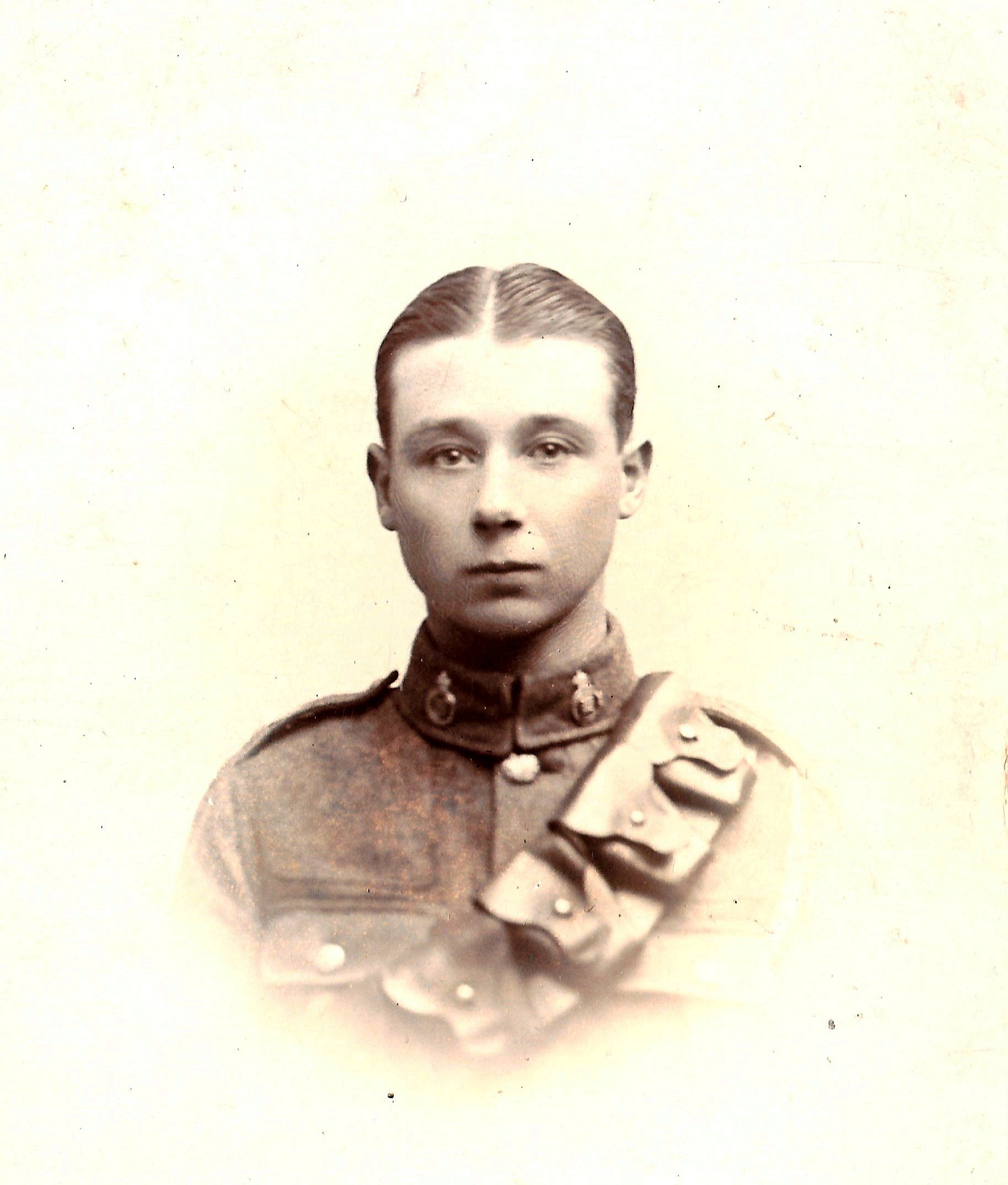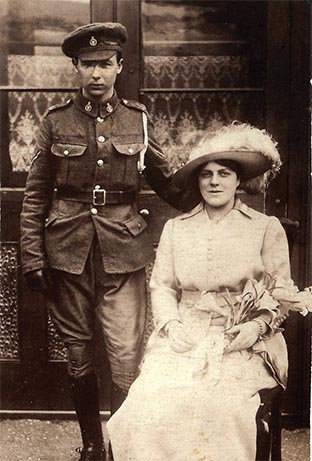Frederick Sutton
Frederick Charles Sutton was born in Seaham, County Durham, on 26th July 1892. His father was William John Sutton and his mother, Jane, née Pearson. Frederick’s father was a Trinity House pilot whose work took him and the family to Aldeburgh, Suffolk, and then to Dovercourt in Essex.
In 1911, Frederick was working as a plumber and gas fitter and, on 28th June, he enlisted into the Essex Yeomanry, a territorial regiment, joining “A” Squadron.
When war was declared on 4th August 1914, the regiment’s headquarters in Colchester received a telegram containing the single word: “Mobilise”. They assembled in Ipswich on 7th August and were sent, as part of the Eastern Mounted Brigade, to billets in the Woodbridge area, specifically Melton and Ufford. For Frederick, this was to be a homecoming of sorts as he had been living and working in Melton in the months leading up to the start of the war.
The regiment received orders to prepare for deployment to France on 12th November 1914 and, on the 29th November the Essex Yeomanry boarded a train at Woodbridge Station bound for Southampton. Upon arrival, they were transferred to the SS Anglo-Canada, reaching Le Havre at midday on the 30th and disembarking at 09:30 the following day. The war diary gives the regiment’s strength as: twenty-five officers, four hundred and sixty-eight other ranks, five hundred and thirteen horses, sixteen four- wheeled waggons, two two-wheeled waggons, seven motorcycles and eight cycles.
Frederick Sutton married Olive Booth at St Andrew’s Church, 
Melton on 21st March 1916, whilst on leave. Frederick had
met Olive before the war while employed in the village.
It was not until 8th February 1915 that Frederick and his battalion first went to the trenches near Zillebeke; a relatively uneventful time with few casualties save the death of Private W Roberts and nine others wounded when a fatigue party collecting rations was shelled.
The Battle of Frezenberg Ridge was the first significant action Frederick and his battalion were involved in, taking place between the 8th and 13th May 1915. It was during this period that the Essex Yeomanry and 10th Hussars charged across four hundred yards of open land to take over trenches from which German soldiers had fled. During the five days of the fighting, the yeomanry suffered over one hundred and sixty casualties from an initial strength of three hundred and two men, including seventeen officers.
Frederick returned to Melton on leave in March 1916 to marry Olive Harriet Booth, the daughter of William Booth, landlord of the Horse and Groom. Frederick had met Olive before the war while employed in the village and their marriage took place at St Andrew’s Church, Melton on 21st March.
In April 1917, Frederick and the Essex Yeomanry were involved in the Battle of Monchy, during which the yeomanry took and held the strategically important village of Monchy-Le-Preux – they suffered one hundred and thirty-five casualties before being relieved. It was in this battle that Frederick was wounded for the first time.
After Frederick had recovered from his wounds, he was transferred to the 10th Battalion Tank Corps. It is thought that Frederick was involved in an action during the Battle of Albert on 21st August 1918 when his tank received a direct hit and, out of the eight crew members, Frederick was the sole survivor with severe burns.
He was repatriated to England and treated at Netley Hospital in Hampshire where he subsequently died of his wounds on 8th September 1918. Frederick is buried at Melton Old Church. The Woodbridge Reporter and Wickham Market Gazette carried an article about his funeral in their 19th September issue:
Military Funeral at Melton
An impressive funeral ceremony took place in Melton on Thursday the 12th instant, when the remains of Gunner Frederick Charles Sutton were interred with military honours. Gunner Sutton was with the Essex Yeomanry in peace days. He joined up in 1914 and shortly found his regiment in Melton, the village in which he was employed. The Essex Yeomanry went through some very hot times in France, and Sutton was always in the thick of the fighting. About 2 years ago he was wounded. A few weeks since he was transferred to the Tank Corps. On the day he was put out of action, his tank had kept going from 04:00 am to 7:30 pm, and had got to within 19 yards of the German lines when it received a direct hit and was set on fire. The deceased was the only survivor. He was badly burnt and sent to Netley Hospital where he died on the 8th inst. He was married to the younger daughter of Mr and Mrs Booth, of the Horse and Groom, Melton, and it was fitting that he should have been brought home to rest.
For his war service, Frederick’s widow, Olive, received the 1914-15 Star and the British War and Victory Medals.
In 1924, Olive married Cecil Claude Holland, himself a veteran of the war serving with the RAF as a motorboat deckhand based at Felixstowe Seaplane Station. In 1939, Cecil, Olive and her father, William Lewis Booth, were living at Oak View in Melton.
